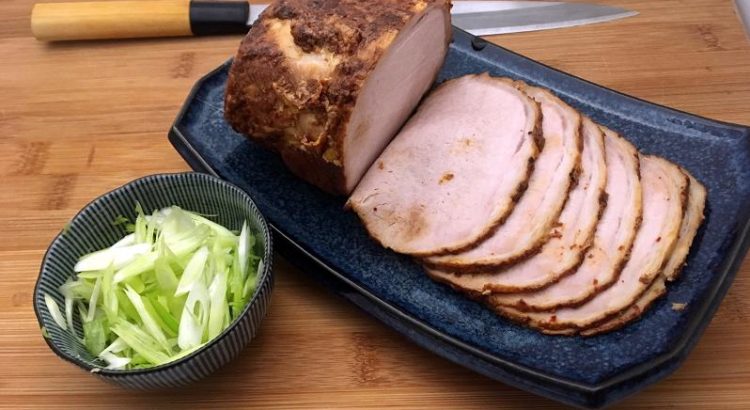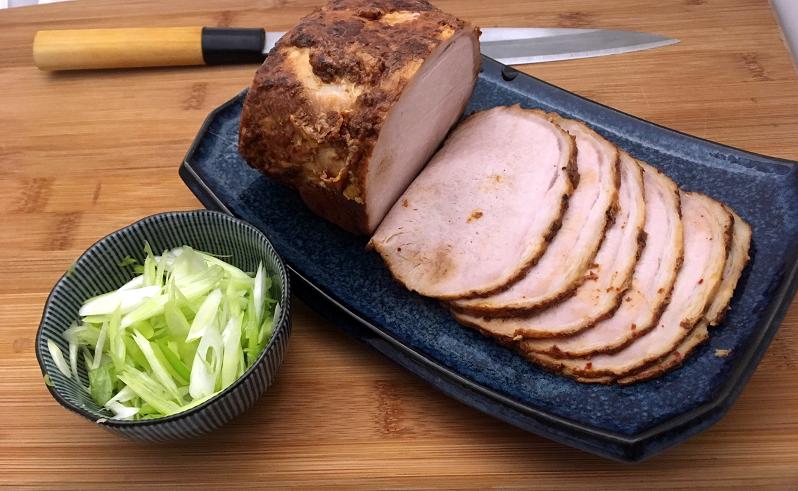 If you’ve ever been to a real Chinese market, have a Chinatown near you, or hell… If you’ve been to China you’ve seen and hopefully tasted Siu Mei in all of its barbecued, glistening glory. It’s a take-out tradition that goes back to Guangzhou in the days when every neighbourhood had a local “oven master” that would roast various animals in special sauce to perfection and sell them to their neighbours to eat with a bit of rice and pickles.
If you’ve ever been to a real Chinese market, have a Chinatown near you, or hell… If you’ve been to China you’ve seen and hopefully tasted Siu Mei in all of its barbecued, glistening glory. It’s a take-out tradition that goes back to Guangzhou in the days when every neighbourhood had a local “oven master” that would roast various animals in special sauce to perfection and sell them to their neighbours to eat with a bit of rice and pickles.
Pork was the king of the Sui Mei trade. Loins, belly, jowls and every other bit of the pig was sliced, skewered, roasted and made part of the Cantonese daily routine. Sure goose, duck and the occasional cuttlefish made an appearance, but it’s always been the magical roasted pig (char siu) that hung most prominently in the shop windows.
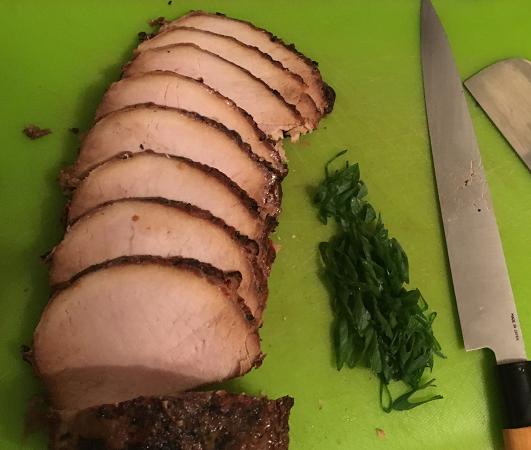 Japanese cooks, sharing the Chinese love of lacquered pork bits, but lacking the space necessary for the BBQ ovens braised their pork instead of straight roasting. The resulting Chashu or sometimes also called Nibuta gave the pork a much deeper colour and pronounced savouriness but far less “char” than traditional “char” siu.
Japanese cooks, sharing the Chinese love of lacquered pork bits, but lacking the space necessary for the BBQ ovens braised their pork instead of straight roasting. The resulting Chashu or sometimes also called Nibuta gave the pork a much deeper colour and pronounced savouriness but far less “char” than traditional “char” siu.
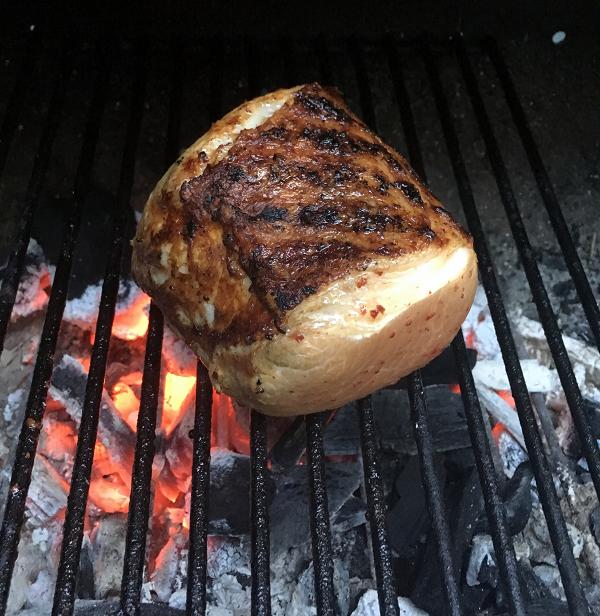 After playing around for quite awhile with the recipe that chef Hiro taught me (way back in my Wasabiya days) I’ve come up with a compromise between the high-heat Chinese original and the Japanese slow braised re-mix that I both love so much. I grill the marinated pork over high heat on the BBQ to get the proper char then braise it low ‘n slow in a proper Japanese soy and sake broth.
After playing around for quite awhile with the recipe that chef Hiro taught me (way back in my Wasabiya days) I’ve come up with a compromise between the high-heat Chinese original and the Japanese slow braised re-mix that I both love so much. I grill the marinated pork over high heat on the BBQ to get the proper char then braise it low ‘n slow in a proper Japanese soy and sake broth.
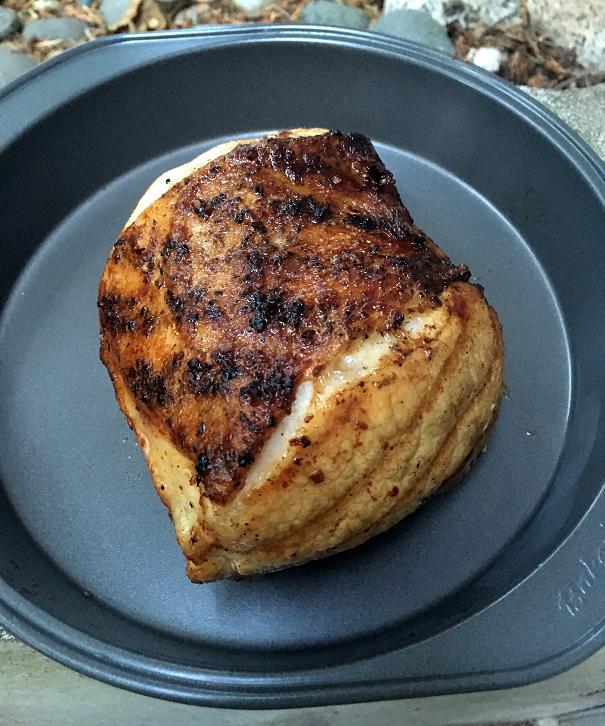 The pork is submerged in the leftover braising liquid before refrigeration and continues to mature in flavour the longer it lives there. The pork can be removed, sliced and whatever is left can return to its murky, savoury home until next time. It’s perfect for mixing into fried rice, topping a late-night miso ramen, or just eaten plain with a bit of rice and pickles just like in the old days.
The pork is submerged in the leftover braising liquid before refrigeration and continues to mature in flavour the longer it lives there. The pork can be removed, sliced and whatever is left can return to its murky, savoury home until next time. It’s perfect for mixing into fried rice, topping a late-night miso ramen, or just eaten plain with a bit of rice and pickles just like in the old days.
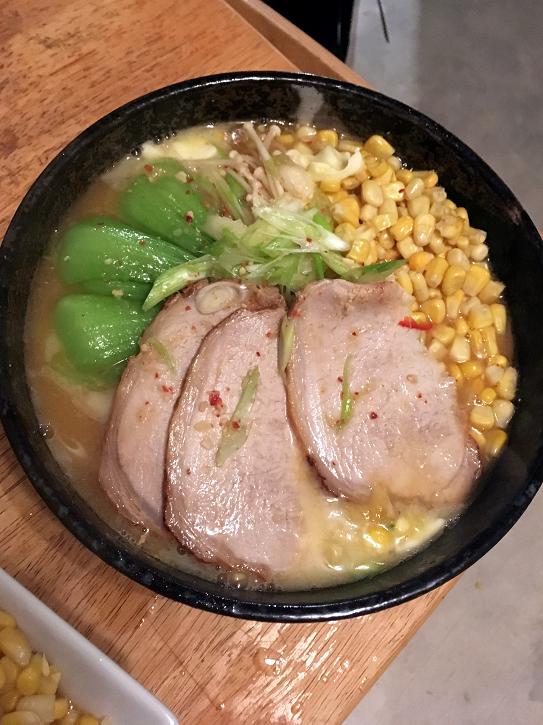
Soy-Braised Pork Loin (Serves 4-6)
Ingredients
- 1 ½ lb (680g) Boneless Pork Loin (trimmed of all but a ¼” of fat)
- 1 tbls (15ml) Mirin
- 1 tbls (15ml) Light Soy Sauce
- 1 ½ tsp (11g) Kochukoru (Korean Chillie Spice)
- 1 cup (240ml) Sake
- 1 cup (240ml) Mirin
- 1 cup (240ml) Light Soy Sauce
- 1 cup (240ml) Chicken Stock
- 1 Small thumb of Ginger (30g, peeled and left whole)
- 3 Medium Garlic Bulbs (45g, peeled and left whole)
- 3 Whole Star Anise (16g)
Method
- Marinate the trimmed pork loin with mirin, soy and kochukoru for at least four hours. I usually use a large ziplock bag and turn it every time I pass the fridge. Fire up your BBQ on high heat and lump your charcoal into a nice, tightly packed even layer under the grill. Slap that pork onto the grill and leave it for 4-5 minutes or until its dark brown before flipping it. Sear evenly on each side (Same thing, 4-5 minutes) and remove from the grill to rest. (Alternatively, if you don’t want to freeze your butt off in front of the grill you can sear the pork in a pan on the stove. Just make sure the pan is ‘screamin hot before you drop the pork in. All the times are the same.)
- Bring the sake, mirin, soy, stock and aromatics to a simmer in a medium-sized pot and place the pork in. The liquid should reach three-quarters of the way to the top of the loin. Slap a lid on and simmer on medium heat for 40 mins. Carefully flip the pork over and put the lid back on. Continue to simmer the pork for another 40 minutes.
- Remove the pork from the liquid and set aside to cool. Strain the liquid into a bowl and let it cool as well. Once the pork and liquid are both cooled combine them in a non-reactive container big enough for the meat and liquid and refrigerate them until use. It’s best to leave them together for at least a day to mature in flavour.
 Music To Braise Pork To:
Music To Braise Pork To:
Otis Junior and Dr. Dundiff – Hemispheres
